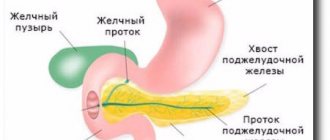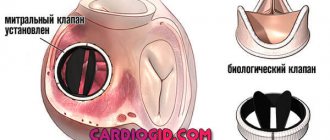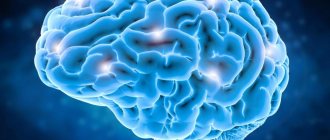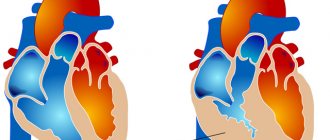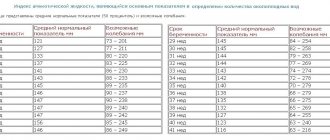Heart and vascular diseases are the leading cause of death in all developed countries - up to 31% of all deaths, according to WHO. One disease contributing to this mortality is myocarditis.
Myocarditis is a serious disease of the heart muscle, characterized by inflammation of the middle, thickest layer of the heart - the myocardium. The leading role in the occurrence of this pathology belongs to infections, and less often to allergic and autoimmune diseases. In rare cases, myocarditis occurs as a result of poisoning with toxic substances. Myocarditis accounts for up to 10% of heart diseases.
Classification of myocarditis depending on its causes
The international classification of this disease is based on the etiological factor, that is, the main cause that causes the disease. Based on this, the following forms of myocarditis are distinguished.
Infectious
A severe infectious disease, especially in people with weakened immune systems, often causes complications in the heart - inflammation of the heart muscle develops. The root cause may be:
- herpes viruses, influenza, hepatitis, Coxsackie virus;
- bacteria: diphtheria bacillus, streptococcus, rickettsia, chlamydia;
- fungi of the genus Candida and Aspergillus;
- parasites, including helminths: echinococcus, roundworms, bovine tapeworm.
Rheumatic
In fact, rheumatic myocarditis is a type of infectious, but due to its prevalence and characteristics, it is separated into a separate form. The reason is a pronounced immune reaction to Streptococcus haemolyticus (hemolytic streptococcus).
Allergic
The leading process in the formation of this form of the disease is an allergic reaction, and various conditions can be trigger factors:
- burn disease - massive tissue necrosis leads to the release of destroyed proteins and toxins into the blood, causing the synthesis of autoimmune antibodies, which damage the myocardium;
- condition after transplantation - an immune reaction to the transplant leads to heart damage;
- drug allergies - some drugs increase the affinity of antibodies to the heart, as a result of which the antibodies cause inflammation in the myocardium.
This type of myocarditis also includes idiopathic, the cause of which is not fully understood.
Toxic
Alcohol intoxication, uremia (increased uric acid levels in the blood due to renal failure), poisoning with certain heavy metals can trigger myocarditis.
Symptomatic
Quite often, myocarditis develops against the background of chronic diseases, usually autoimmune: systemic lupus erythematosus, scleroderma.
Causes
According to the classification proposed by the working group on myocarditis and pericarditis of the European Society of Cardiology in 2013, there are three mechanisms for the development of the inflammatory process of myocardial tissue - infectious, immune-mediated, toxic. In most cases, there is an autoimmune-mediated effect on cardiac cells, although direct cytotoxic effects of the etiological factor also play a role in the development of the disease. The following mechanisms of damage are distinguished:
- Direct toxic effect of the etiological agent on heart tissue.
- Secondary damage to myocardial cells caused by the body's immune response to the introduction of the pathogen.
- Expression of cytokines – activation of enzyme systems and release of active biological substances in the myocardium.
- Aberrant induction of apoptosis – abnormal processes of destruction of healthy cardiomyocytes are triggered.
The etiology of myocarditis is presented in Table No. 1:
Table 1
| Type | Etiological agent |
| Infectious | |
| Viral | Coxsackie viruses A and B, poliovirus, ECHO viruses, influenza A and B, measles, mumps, rubella, hepatitis C, herpes, Dengue, yellow fever, Lassa fever, rabies, Chukungunya, Junin, HIV infection, adenovirus. |
| Bacterial | Staphylococcus aureus, streptococci, pneumococcus, mycobacterium tuberculosis, meningococcus, Haemophilus influenzae, salmonella, Lefler's bacillus, mycoplasma, brucella. |
| Caused by spirochetes | Borrelia is the causative agent of Lyme disease, Leptospira is the causative agent of Weil's disease. |
| Caused by Rickettsia | The causative agent of Q fever and Rocky Mountain spotted fever. |
| Caused by fungi | Fungi of the genus Aspergillus, Actinomycetus, Candida, Cryptococcus. |
| Parasitic | Trichinella, echinococcus, pork tapeworm. |
| Caused by protozoa | Toxoplasma, dysenteric amoeba. |
| Immune-mediated | |
| Allergic | Vaccines, serums, toxoids, medicines. |
| Alloantigenic | Rejection of a transplanted heart. |
| Autoantigenic | Antigens produced in the human body during systemic lesions. |
| Toxic | |
| Medication | As a side effect of medications. |
| Exposure to heavy metals | Copper, lead, iron. |
| Caused by poisons | Poisoning, reptile and insect bites. |
| Hormone | For pheochromocytoma, hypovitaminosis. |
| Caused by physical factors | Ionizing radiation, exposure to electric current, hypothermia. |
Classification of myocarditis
In half of the cases, it is not possible to establish the exact etiology. Cardiologists call this myocarditis idiopathic. Scientists have also discovered an interesting “geographical” phenomenon - on the European continent, parvovirus B19 and human herpes virus type 6 are more often detected in cardiac biopsies, in Japan - hepatitis C virus, in North America - adenovirus. In addition, there was a change in the leading etiological agent over time - until the 1990s, myocarditis was caused in most cases by the Coxsackie virus type B, from 1995 to 2000. – adenoviruses, and since 2001 – parvovirus B19.
How does myocarditis develop?
Regardless of the form of the disease, the basis for its development is a violation of immune reactions. Damage to certain parts of the immune system leads to the formation of autoantibodies to the myocardium. The peculiarity of these antibodies is that they bind to myocardial cells and trigger an inflammatory reaction in it.
Of course, this is a very simplified diagram of the development of the disease - not only antibodies, but also immune cells, as well as regulatory compounds - inflammatory mediators, are involved in the formation of clinical symptoms.
What diseases can it be associated with?
Myocarditis can develop due to a genetic predisposition to this, as well as due to the prevalence of infection in the body:
- influenza viruses,
- coxsackievirus,
- cytomegalovirus,
- Epstein-Barr virus,
- hepatitis viruses,
- herpes simplex viruses types I, II,
- bacteria - streptococci, staphylococci, meningococci, pneumococci,
- mushrooms - aspergillus, candida, coccidoid, etc.,
- helminths, rickettsia, etc.
Myocarditis can result from untreated chlamydia, polio, leptospirosis, echinococcosis, salmonellosis, or from an allergic reaction (for example, to a drug). Myocarditis is complicated by sepsis and heart failure.
Symptoms of myocarditis
This disease is characterized by symptoms of cardiac dysfunction. The severity of the disorders depends on the degree of myocardial damage. Based on this symptom, they distinguish between focal, when inflammation affects individual areas of the heart muscle, and diffuse, when the entire heart is affected - myocarditis.
The severity of symptoms depends on the extent of the lesion, and the diffuse form of myocarditis is much more severe. The severity of the course is also determined by the severity of heart damage, the localization of foci of inflammation and the rate of progression of heart failure.
Patients most often present the following complaints:
- fast fatiguability;
- chest pain (“heart pain”);
- shortness of breath even with slight physical exertion;
- increased sweating;
- palpitations or a feeling of irregular heartbeat.
Treatment of myocarditis with traditional methods
Folk remedies are unlikely to help with myocarditis if they are the only method of treatment. However, their use is quite advisable if combined with medication during the recovery period. Preference is given to diuretic medicinal herbs and herbs to relieve swelling of the heart, as well as anti-inflammatory folk remedies:
- St. John's wort,
- wild strawberry,
- rose hip,
- hawthorn, etc.
Specific prescriptions and duration of use should be discussed with your doctor.
Classification of myocarditis according to the leading clinical symptom
| Name | Symptoms |
| Asymptomatic | I am worried about slight weakness, fatigue, cardiac symptoms are practically absent. Infectious-allergic myocarditis most often occurs in this variant. |
| Painful or pseudocoronary | The appearance of pain in the heart area is typical. The pain can be of a different nature: stabbing, pressing, burning - the clinical picture resembles coronary heart disease. Pain occurs more often with idiopathic or rheumatic myocarditis. |
| Decompensation (with circulatory disorders) | There are signs of impaired peripheral circulation - swelling appears, the skin of the extremities may become bluish. Heart failure most often develops with diffuse myocarditis. |
| Arrhythmic | A typical heart rhythm disturbance is either bradycardia (decreased heart rate) or arrhythmia. |
| Thromboembolic | With this form, there is a high probability of thrombus formation both in the pulmonary artery (PE) and in the vessels of the systemic circulation - in the legs and internal organs. This variant is observed in rickettsial and bacterial myocarditis. |
| Pseudovalvular | Due to changes in the myocardium, deformation of the heart valves occurs, which is manifested by the appearance of a heart murmur. When auscultating the heart, the most common murmur heard in myocarditis is at the apex of the heart. |
| Mixed | To one degree or another, any of the listed symptoms are determined. |
Classification and special types of disease
Several classification options for this disease have been proposed. Most of them take into account the etiology, pathogenesis, morphology, course, clinical picture, and stage of the disease. One of the most fully reflective symptoms of myocarditis in adults is presented in table. 2.
Table 2 Clinical and morphological classification of myocarditis EB Lieberman et al. (1991)
| Characteristic | Clinical form | |||
| Lightning fast | Acute | Chronically active | Chronically persistent | |
| Manifestation of the disease | Rapid onset with outcome within 2 weeks | Less clear | Ill-defined | Blurred. The patient is often unable to accurately indicate when the first signs appeared |
| Biopsy data | Active infiltration with foci of necrosis and hemorrhage | The inflammatory process is moderate, sometimes active | Active or borderline myocarditis | Myocardial infiltration is combined with necrotic lesions |
| Left ventricular function | Reduced in the absence of dilatation | Dilatation and decrease in myocardial contractile function | Moderate dysfunction | Saved |
| Exodus | Death or complete restoration of function | Frequent transformation to dilated cardiomyopathy | Development of restrictive cardiomyopathy over 2–4 years after the onset of the process | Favorable prognosis |
There are also Dallas criteria that divide myocarditis into:
- active, occurring against the background of inflammatory infiltration (necrosis, degenerative changes);
- borderline - a small amount of infiltrates or no signs of cell destruction.
Let's talk in more detail about individual forms of myocarditis.
Autoimmune myocarditis
The cause of development is the reaction of antibody production to external allergens (medicines, toxins). They also appear in systemic diseases, when the body begins to synthesize antigens (systemic lupus erythematosus, celiac disease).
One of the variants of autoimmune myocarditis is rejection of a transplanted heart due to the production of allogenes.
Toxic myocarditis
When examining such a heart under a microscope, there are practically no eosinophils (leukocytes characteristic of allergies), foci of necrosis with subsequent compaction are revealed. Cocaine intoxication causes acute myocarditis, which is accompanied by pulmonary edema.
In the case of taking anthracycline antibiotics, dystrophy develops, followed by cardiosclerosis, often accompanied by pericarditis. In case of poisoning with certain compounds, manifestations can only be expressed by changes in the electrocardiogram.
Diphtheria myocarditis
Diphtheria in ¼ of cases is accompanied by myocardial dystrophy. In this case, the conductive pathways that are responsible for the transport of the electrical signal are often damaged. Complications usually occur in the second week of illness. Characterized by heart enlargement and heart failure.
Eosinophilic myocarditis
Occurs more often in people who use drugs or toxic substances, and is often accompanied by itchy, spotty rashes. Under the microscope there are foci of necrosis and eosinophilic infiltration.
giant cell
It is characterized by sustained ventricular tachycardia and progressive heart failure. Conduction disturbances occur less frequently.
Idiopathic myocarditis Abramov-Fiedler
A rare disease characterized by malignant progression and the development of right ventricular failure. Arrhythmias and thromboembolic events appear. When chronic, it can occur latently, ending in sudden death.
Idiopathic Abramov-Fiedler myocarditis under a microscope (source: beregi-serdce.com)
Diffuse myocarditis
It manifests itself as extensive damage to the muscle layer. Since children and young people are more likely to suffer, some authors call it a “young” disease. Often this is infectious myocarditis, accompanied by fever, cardiac arrhythmia, and stretching of the heart.
Rheumatic myocarditis
In acute rheumatic fever, 50–90% of the heart suffers, which manifests itself as endomyocarditis. Symptoms include joint pain, subcutaneous granulomatous nodules, and seizures.
Focal myocarditis most often affects the posterior wall of the left atrium and affects the posterior left papillary muscle.
Scientists consider peripartum cardiomyopathy to be one of the forms of myocarditis, a pathology that occurs in late pregnancy or after childbirth, characterized by left ventricular failure.
What does a patient with myocarditis look like?
The appearance of a patient with myocarditis is determined by the severity of the disease:
- With a mild course of the disease and at the initial stage, the patient is indistinguishable from a healthy person - he is only worried about general weakness.
- As it progresses, in moderate and advanced cases, the patient acquires a typical appearance: pale skin, lips, fingers and toes (sometimes hands and feet) have a bluish tint.
- In the decompensated form, swelling of the neck veins is clearly visible, especially during physical activity. When walking, there is severe shortness of breath, forcing the person to periodically stop to rest. Decompensated myocarditis is characterized by the appearance of swelling of the legs. If any of the symptoms mentioned appear, you should consult a doctor.
The first signs of myocarditis most often (in 80% of cases) appear 3-8 weeks after any infectious disease. It could be the flu, a cold, or a sore throat. Tell your doctor if you have been sick recently!
Features of the disease
The disease can develop in almost any age group of the population, but most often it affects people of “middle” age (30-40 years). At the same time, representatives of the fairer sex are at risk more often than men, although in the latter the inflammation has more severe forms.
Due to the sluggishness and lack of expression of symptoms, the diagnosis of myocarditis often does not occur at the initial stage of the disease. It is customary to distinguish three types of myocarditis, including infectious and infectious-allergic, as well as rheumatic. The first one is one of the most common. It occurs due to the entry of harmful microorganisms such as bacteria and viruses into the myocardium.
A specialist will talk about the features of the manifestation of infectious and other types of myocarditis in the following video:
Diagnosis of myocarditis
Making a correct diagnosis is significantly difficult due to the lack of specific symptoms - myocarditis can “disguise” as another cardiac pathology. So, the stages of diagnosing myocarditis:
History taking
The doctor talks with the patient, finding out the complaints, the circumstances of their occurrence, the nature of the changes in the complaints over time. Particular attention is paid to past diseases, especially viral and bacterial infections.
Study of the patient's current condition (Status praesens). Consists of several points:
- Examination of the patient aimed at identifying signs of heart failure: shortness of breath, swelling in the legs, cyanosis of the skin, swelling of the neck veins.
- Auscultation. The doctor listens to the heart and lungs. With myocarditis, there is a muffling of heart sounds, and an extraneous heart murmur may appear. On the part of the lungs, there is often a weakening of breathing due to stagnation of blood due to weakening of the heart.
- Percussion. Using “tapping”, the doctor determines the boundaries of the heart - in this case, enlargement of the heart is typical. The relevance of this procedure has decreased somewhat due to the advent of ultrasound research methods, but an experienced doctor always performs heart percussion.
Laboratory and instrumental examination
This is the most important stage, since only the combination of the results of several research methods will make it possible to detect myocarditis with a high probability.
What tests and studies are prescribed for myocarditis?
| Title of study or analysis | Examination result | Explanation |
| ECG – study of the electrical activity of the heart | No changes were detected on the electrocardiogram | Variant of the norm or the initial stage of myocarditis. |
| Focal disturbances in conductivity and excitability, decreased voltage of some waves on the ECG. | They speak in favor of myocarditis, but are not its typical signs. It is recommended to conduct an ECG at intervals of several days - myocarditis is characterized by inconsistent changes in the ECG. The diagnosis of myocarditis cannot be made by ECG alone. | |
| Blood pressure measurement | Persistent hypotension – decreased blood pressure. | This phenomenon is caused by damage to the myocardium, as a result of which the heart cannot maintain normal pressure in the vessels. |
| Ultrasound of the heart with Dopplerography (allows you to determine the condition of the myocardium). The study of its contractile function is of great importance. |
|
|
| X-ray of the chest organs (heart and lungs) | No changes detected | Absence of myocarditis, or focal form. |
| Moderate to severe symptom. Congestion is characteristic of decompensation of cardiac function. | |
| MRI of the heart | Thickening of the heart wall, expansion of the cardiac cavities and pulmonary vessels (due to pulmonary hypertension) | MRI is one of the most informative methods for diagnosing myocarditis. Using this study, it is possible to assess the magnitude of inflammatory edema of the myocardium and identify foci of inflammation in the diffuse form. |
| Scintigraphy | Labeled radioisotopes actively accumulate in inflammatory foci. | The method is only slightly inferior in accuracy to MRI. Allows you to diagnose the disease at an early stage. |
| General blood analysis | Leukocytosis (increase in total white blood cell count) | It is not a specific analysis. It only indicates the presence of inflammation in the body, including an infectious nature. |
| Blood tests: biochemical, serological. | Increased inflammatory markers, antibodies, increased C-reactive protein, aminotransferases. | These are nonspecific tests. Allowing you to once again confirm the presence of inflammation. |
| Immunological analysis | Increased concentration of cardiotropic antibodies. | The analysis allows us to establish the allergic nature of myocarditis. |
To diagnose this disease, various specialists are involved: cardiologists, rheumatologists, functional diagnostics doctors, radiologists. Most often, the diagnosis is made at a consultation with the joint efforts of several doctors.
Treatment of myocarditis during pregnancy
It is strongly recommended to plan pregnancy during the period of remission or complete cure of the disease. To prevent myocarditis from developing during an existing pregnancy, it is recommended to adhere to its prevention measures.
Prevention consists of sanitizing foci of chronic infection, prophylactic antibiotic therapy before dental, urological, gastroenterological (endoscopy, colonoscopy), pulmonological (bronchoscopy) and other interventions. The state of the body's immunological reactivity is important.
Treatment of myocarditis in a pregnant woman, which if it happens, is in the last trimester of pregnancy, comes down to etiological treatment and the effect on the causative agent of the disease, in parallel with this, treatment of complications and symptomatic treatment is carried out. A pregnant woman diagnosed with myocarditis should receive hospital treatment. Self-medication is unacceptable. Antibacterial therapy is carried out taking into account the sensitivity of the pathogen with drugs that are as safe as possible for the expectant mother and baby, the decision about which lies within the competence of the attending physician.
Why is myocarditis dangerous?
Heart damage due to myocarditis is fraught with dangerous manifestations, some of which can cause death. The inflammatory process in the myocardium subsequently leads to the replacement of myocardiocytes (muscle fibers) with connective tissue. As a result, the heart can no longer adequately cope with the function assigned to it - pumping blood. This leads to the formation of severe heart failure.
The inflammatory process interferes with the normal conduction of electrical impulses in the heart, which leads to cardiac arrhythmia. In particularly severe cases, cardiac arrest may occur.
Diet characteristics
Limiting the consumption of salt and water, foods that contain cholesterol and cause flatulence. Foods that stimulate the cardiac and nervous systems are also limited. The diet should not contain foods that irritate the liver and kidneys, but should be enriched with vitamins, magnesium and potassium.
The amount of free liquid, including soups, jelly, compote, in patients with myocarditis should be only 1.2 - 1.4 liters per day. All dishes are prepared without salt; meat or fish are boiled or stewed. The energy value of the diet of a patient with myocardial infarction should be at least 2300-2600 kcal.
The following are excluded from the patient's diet:
- alcohol, strong teas and coffee, cocoa, chocolates, smoked foods and spicy foods.
- foods that cause flatulence (legumes, radishes, cabbage, carbonated drinks).
- salted and pickled vegetables, mushrooms.
- lard, animal fat.
It is better to eat lean fish and meat, vegetarian soups, low-fat cottage cheese, fermented milk products, and various cereals.
Frequency of meals up to 6 times a day in small portions.
Products prohibited for myocarditis
Beans
Alcohol
Strong tea
Coffee
Chocolate candies
Acute
Cabbage
Soda
Salo
Marinated mushrooms
Salted cucumbers
Radish
How is myocarditis treated?
During the acute period of the disease, the patient is subject to mandatory hospitalization in a hospital, regardless of whether the disease has arisen for the first time or this is the next exacerbation, as in rheumatic myocarditis. The patient is first required to limit physical activity - bed rest is prescribed. These measures are aimed at reducing the load on the heart and compensating cardiac activity.
An important component of treatment is diet, table No. 10 according to Pevzner is prescribed, which is useful for most heart diseases, features of this diet:
- limiting the amount of fluid consumed
- reduced amount of table salt
- The consumption of baked goods, fried foods, meat, and smoked products is also limited.
Treatment of myocarditis is aimed at all parts of the disease: eliminating the pathogen, relieving inflammation (pathogenetic therapy), eliminating symptoms (symptomatic treatment).
Etiological treatment
The prescription of antibiotics, antiviral drugs, and antiprotozoal drugs is carried out if the presence of a corresponding pathogen in the body is suspected. At the same time, all foci of chronic infection in the body must be sanitized: abscesses, carious teeth, sinusitis, adnexitis, prostatitis, etc.
When prescribing an antibiotic, it is desirable to determine the sensitivity of the pathogen to it, although first these drugs are prescribed empirically - I use broad-spectrum antibiotics.
For autoimmune or allergic myocarditis, hormonal drugs are used.
Pathogenetic treatment
You can eliminate inflammation in the myocardium with:
- glucocorticosteroids - hormones (prednisolone, metipred, etc.) are prescribed for severe disease, as well as for autoimmune damage, since these drugs have an immunosuppressive effect. The anti-inflammatory effect is realized by suppressing the synthesis of antibodies.
- Nonsteroidal anti-inflammatory drugs (NSAIDs) are used for mild to moderate cases. Myocardial edema is eliminated, and in the case of pain, the pain syndrome is significantly reduced or completely disappears. The frequency of taking medications is determined by the doctor, taking into account the individual characteristics of the course of the disease. Examples of drugs: Ibuprofen, Voltaren, Diclofenac, Ibusan, Nurofen (see drugs for pain).
- antihistamines - see list of allergy pills
The duration of therapy with NSAIDs and hormones is determined by the results of repeated tests: signs of inflammation disappear in biochemical and general analyzes.
Symptomatic treatment
To eliminate the external manifestations of the disease, the following drugs are prescribed:
- antiarrhythmic - for severe rhythm disturbances;
- anticoagulants - for the prevention of thrombus formation (in the thromboembolic variant), aspirin, thrombo-ass (see list of direct and indirect anticoagulants).
- blood pressure agents – at very low blood pressure.
Metabolic therapy for myocarditis
During treatment, the myocardium should be supported, so doctors prescribe drugs that stimulate metabolism in the heart and improve its nutrition. The purpose of these drugs is to facilitate the recovery of the heart muscle. Such drugs include vitamins, ATP, Riboxin, Mexicor.
Potassium preparations also promote myocardial restoration, improve intracardiac conduction, and prevent the development of arrhythmias.
The duration of myocardial treatment in the best case is 4 months, but after completion of the course, rehabilitation is recommended. On average, the myocardium is treated for 6-7 months, and in severe cases – up to a year.
Treatment aimed at eliminating the infectious agent
As a rule, in most cases myocarditis is caused by viruses. Patients are prescribed interferon-type drugs.
Viferon and Genferon suppositories are very effective for any viral diseases.
They contain ready-made interferon (a protein that fights viruses and prevents their further reproduction), obtained by genetic engineering, so these drugs have powerful immunomodulatory properties, which has a beneficial effect on the course of myocarditis.
Viferon
Treatment with drugs of this group is prescribed if the viral infection is still in full swing and myocarditis has already begun to develop. If two or three weeks have already passed since the onset of ARVI, influenza or enterovirus infection, then interferons are not used.
Patients with bacterial myocarditis are accordingly prescribed antibiotics, which are administered intramuscularly. The course of such myocarditis is favorable with careful sanitation of foci of infection (usually the nasopharynx and upper respiratory tract).
For non-infectious myocarditis, it is enough to cancel the provoking factor (medicines, irradiation of patients, allergic factor).
Forecast
With an asymptomatic variant, a complete cure is possible without any complications or consequences. In severe cases, patients develop chronic heart failure. In some cases, the risk of death is very high:
- in Chagas disease, symptomatic myocarditis leads to death in 30-40% of cases
- with diphtheria, the mortality rate is 50-55%.
With rheumatic and idiopathic myocarditis, there is a tendency to relapse - depending on the severity, relapses can occur every year or less often. In this case, anti-relapse treatment is carried out.
Directions in treatment
Directions in the treatment of myocarditis
Treatment of myocarditis is the work of a cardiologist. The doctor must carefully examine the patient’s complaints and previous history, conduct all the necessary examinations, make a diagnosis, be sure to determine the cause that caused myocarditis, and also find out the stage of myocarditis. After all, the acute stage of myocarditis requires hospitalization of the patient in a specialized department, bed rest for 4-6 weeks, the approach to treating the chronic stage is somewhat different.
The main directions in the treatment of myocarditis are:
- etiological direction,
- mode,
- nutrition,
- drug symptomatic therapy,
- metabolic direction,
- physiotherapy.
All areas of treatment constitute a single treatment program for a patient with myocarditis. Let's consider each of the points of this program in more detail.
Prevention of myocarditis
The disease can be prevented by following nonspecific methods of prevention:
- hardening;
- healthy, balanced diet;
- giving up bad habits that reduce immunity (alcohol, smoking, drugs);
- improvement of living conditions;
- timely treatment of infectious diseases;
- taking vitamins during influenza and ARVI epidemics;
- vaccination against the most common infections: diphtheria, rubella, measles, herpes and others.
In case of a recurrent course, follow-up with a cardiologist is mandatory: consultation is necessary every 3 months in the first year after the illness and every six months for the next 3 years.
Author:
Selezneva Valentina Anatolyevna physician-therapist
Physiotherapy
With positive dynamics, a gradual transition from bed rest to ward rest, and then to general rest, under careful monitoring of blood pressure, pulse and ECG, under the guidance of a physical therapy instructor, physical cardio exercises are gradually included in the treatment. You cannot engage in exercise therapy if there is even the slightest sign of circulatory failure. Patients who have had myocarditis are observed with preventive examinations by a cardiologist for 1 year, every three months.
If there is no effect from treatment, with progression of the disease, circulatory decompensation, according to indications they resort to the last resort - heart transplantation.
Diagnosis of the disease in adults and children
How to identify viral myocarditis? Diagnosis of this pathology begins with examination and physical examination of the patient. The main method to suspect myocarditis is auscultation of the heart valves. When listening with a phonendoscope, a decrease in the sonority of the 1st and 2nd tones is noted. Damage to the mitral valve is indicated by the appearance of a systolic murmur. With severe inflammation of the myocardium, splitting of the 1st tone is heard. The chronic disease is accompanied by heart failure and dilatation of the left ventricle. On auscultation, such a complication is expressed in the appearance of diastolic murmur.
Laboratory diagnostics include CBC and biochemical blood test. With inflammation, leukocytosis, lymphocytosis and neutropenia, increased levels of C-reactive protein, fibrinogen, and accelerated ESR are observed. An increase in heart size is indicated by percussion and ECG data. Damage to the valve apparatus is noticeable during ultrasound examination - echocardioscopy.
To identify the etiological factor, immunological diagnostics are performed. It allows you to determine the titer of antibodies to certain types of viruses. The material for analysis is biological fluids, in most cases blood. PCR is also performed to isolate the DNA and RNA of the pathogen.
Features of the course of pathology in children
In cardiological practice, viral myocarditis in children is often encountered. The symptoms are not very different from the manifestations of the disease in adults. However, there are some features of the course of the disease. Unlike adults, symptoms in children depend not only on the prevalence of the inflammatory process, but also on the age of the child. The disease is especially severe during the neonatal period. The disease is accompanied by intoxication, refusal to feed and the appearance of cyanosis. The baby's skin takes on a bluish tint, the baby constantly cries and does not sleep. As the disease progresses, swelling and shortness of breath are observed even at rest.
Viral myocarditis in young children has the same manifestations. In addition, children often complain of pain in the abdomen and chest, sometimes the pathology is accompanied by a cough. Preschool age is considered the peak of viral myocarditis. Symptoms of the pathological process become more similar to the clinical picture observed in adults. The main complaints include fever, muscle pain and weakness. Then comes an unpleasant tingling sensation in the heart area. Children quickly get tired of games and physical education. This occurs due to increasing shortness of breath associated with cardiac dysfunction.
Clinical signs of infectious inflammation of the heart muscle
Almost any infection is accompanied by damage to the heart muscle. But the changes, as a rule, are minor, do not manifest themselves symptomatically and quickly disappear after the underlying disease is relieved.
In half of the cases, myocardial inflammation is recorded after viral infections of the respiratory tract.
Typically, the first symptoms of myocarditis are recorded 14 days after acute respiratory viral infection.
But sometimes the idea of inflammatory damage to the heart muscle occurs to the doctor when, at the height of an infectious disease that occurs with fever and general intoxication, signs of myocardial damage develop, ranging from insignificant changes in the electrocardiogram, accidentally detected during a routine examination, to severe heart failure.
The manifestation of the disease depends on several factors:
- on the severity of the pathological process
- on the prevalence of inflammation;
- depending on the location of the source of damage.
Even a small area of myocardial damage involving the structures of the conduction system can cause sudden death due to the development of uncontrolled arrhythmia.
If cardiac myocarditis has a mild course, then the symptoms are not specific: increased body temperature, weakness, fatigue, sweating.
With a moderate degree of the course, the following are involved: tachycardia (rapid heartbeat), shortness of breath, cardialgia - pain in the heart that does not depend on physical activity, extrasystole.
In severe cases, the symptoms of myocarditis are caused by dilatation (pathological expansion) of the chambers of the heart. This phenomenon is accompanied by the development of cardiovascular failure with circulatory disorders, which is expressed by difficulty breathing and swelling of first the lower, then upper extremities, an increase in the size of the liver, and accumulation of fluid in the abdominal cavity - ascites.
Disturbances in the conduction of nerve impulses and changes in the normal rhythm of the heart may be recorded: extrasystole, atrial fibrillation, tachycardia.
Sudden cardiac death due to severe arrhythmias is the result of the most severe manifestation of myocarditis.
Chronic myocarditis is a consequence of the acute form of the disease. In this case, an active form may be observed, accompanied by disruption of the left ventricle, and a persistent form, with preserved cardiac function in the initial stages.
In some cases, myocarditis acquires symptoms of a heart attack. Chest pain occurs, and the results of an electrocardiographic study and biochemical blood test reveal characteristic signs of myocardial infarction.
A few words about our heart
Our heart is a four-chambered muscular pump about the size of an adult's fist. Typically, the heart beats about 60 to 100 times per minute, pumping blood through itself during each beat. The wall of the heart consists of three layers: the inner - endocardium, the middle or muscular - myocardium and the outer - epicardium. The heart is enclosed in a special cavity surrounded by the pericardium. Between the peri- and epicardium there is a small amount of fluid necessary for smoother movements of the heart during operation.
